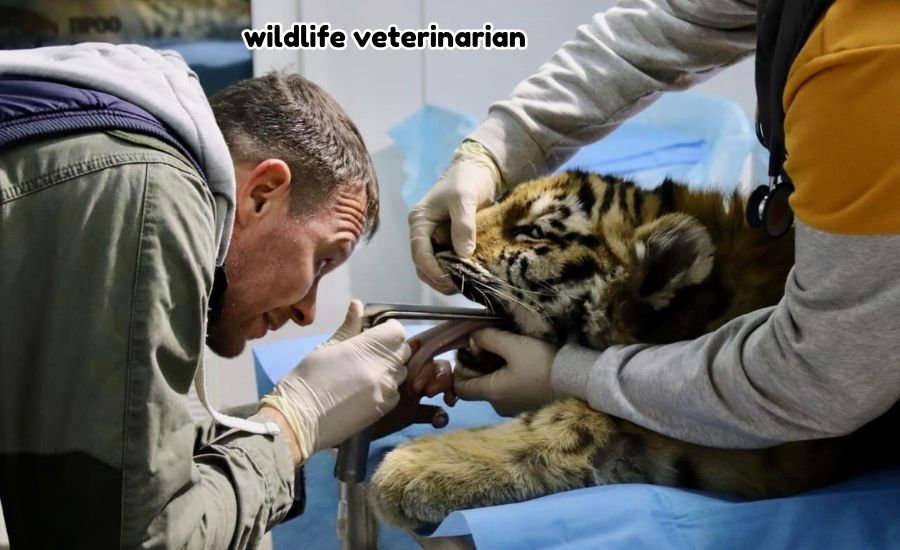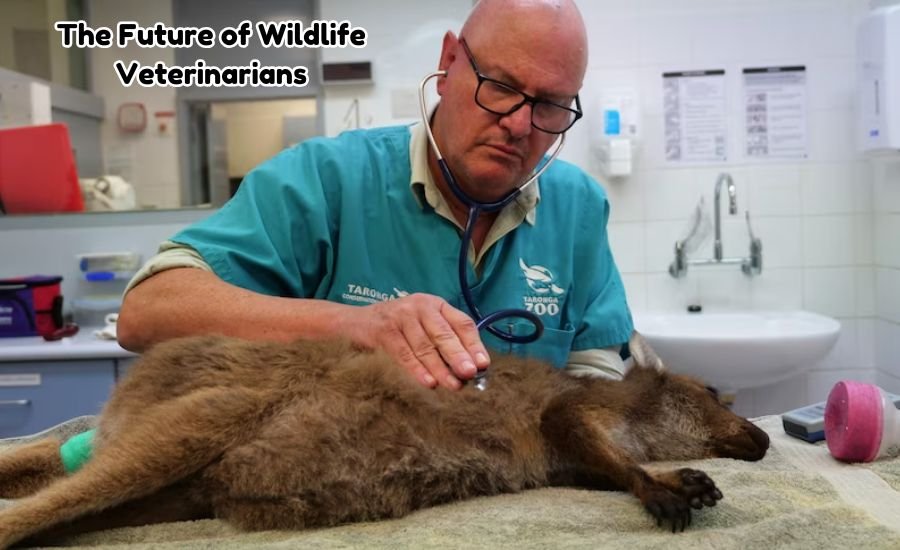Animal veterinarians play an essential part in securing wild animals, and making sure that they are in their natural habitat in the area they live. They select the vets who select are experts in the care for wild animal. They can treat all animals, as well as endangered and rare species. They usually work in the field and they’re capable of handling emergencies and conduct studies to help keep alive the efforts. The role of wildlife vets is growing more crucial because of nature of human activities and climate changes can create problems for animals across the world.
Wildlife veterinarians are skilled in treating animals injured or suffering from illness. They are essential to ensuring the well-being for ecosystems. They can keep track of the spread of diseases and work closely in collaboration with various conservation organisations as well as other organizations. They help in protecting species at risk to disappear. Their main duties are taking care of wild animals which can be dangerous and unstable and require a lot of understanding and experience.
What Does a Wildlife Veterinarian Do?
The abilities of a wildlife vet aren’t limited only to animals that are domestic. They can also be extended to animals in the natural setting. This includes reptiles, mammals, and marine birds species. They are employed in wildlife refuges, National parks and natural reserves.
The main responsibilities of vets are:
- Diagnostic and treatment of ailments related to wildlife veterinarians are seen by wildlife in their natural habitats and the rehabilitation centers. They can detect illnesses such as rabies distemper and a variety of other diseases. They might suggest vaccinations, medicines or other treatments for animals.
- Medical procedures and treatments. They offer treatment for animals suffering injuries, including caring for animals who are injured due to bone fractures or shots caused by collisions with cars.
- The monitoring of wildlife population of wildlife veterinarians is crucial in observing changes in condition that wildlife. They can detect the spread of diseases and make sure that animals are healthy by conducting health checks.
- Public education typically concentrates on educating the public about the health and security dangers that wild animals face.
Why is the Work of a Wildlife Veterinarian Important?

Their work as wildlife veterinarians are crucial in ensuring the peace ecosystems have. Through preventing and treating diseases they can stop the spread of illness which can spread between humans and animals (zoonotic illness) and make sure that the wildlife population is stable and healthy. Without the assistance of wildlife vets, animals could be at risk of experiencing a drastic drop in their numbers because of injuries or illnesses which could have been avoided. If an animal is in danger, the vets often work with conservation groups to protect the species and assist in returning the species to their natural numbers.
They form an integral component of:
- Wildlife veterinarians are available to provide medical assistance. They are allowed to let animals go back to their natural habitat after their healing.
- Protection of Biodiversity The efforts they make to care for wildlife ensure that endangered and threatened species are given the best chances for survival. Through making sure that the species is healthy, wildlife veterinarians contribute in the conservation of biodiversity for the next generations to come.
Skills and Qualifications of a Wildlife Veterinarian
The procedure to become an veterinary surgeon is a difficult and long-lasting process that demands an extensive amount of education and. Similar to doctors, veterinarians must be awarded the title of doctor (DVM) prior to when they are able to attain particular expertise in handling animals. This typically comes through the graduation of a residency or an introductory course in zoological or animal medicine. Animal veterinarians must possess numerous abilities that go beyond medical expertise, and possess the capacity to handle wildlife in a responsible and effective way. They must also possess the capability to work in remote locations and have an in-depth understanding of the surrounding and the importance of protecting the ecosystem.
The most important prerequisites for this job is:
- The diagnostic capabilities of wildlife veterinarians must be able to identify the diverse injuries and conditions which can be suffered by wild mammal. They could be common diseases or rare zoonotic illnesses.
- Understanding the behavior of animals is essential to know the behaviours of different species to make sure that they receive the most effective and safe treatment, especially those with big sizes that could pose the risk of.
- understanding the conservation practices. Knowing that medical assistants are aware of the necessity in conservation methods.
The Challenges Faced by Wildlife Veterinarians
Veterinarians who work with animals are an exciting profession. However, it’s difficult. Veterinarians who care for animals live in remote regions and have to have to deal with issues of vulnerable animals, which requires the help of experts. The conditions they work in is usually fragile and could be classified as being in a range of environments, from dry forests as well as isolated beaches to regions that were devastated due to natural catastrophes. In addition the emotional stress created by injuries to vulnerable animals can be quite significant. Veterinarians for animals are frequently faced with difficult decisions on how to handle the situation, or let the animal to be left free if they are in the situation to recover.
The reasons are:
- For regions which are remote, there aren’t enough vets to treat patients in remote regions. They do not typically provide the services that you would expect from conventional vet clinics, such as the latest medical equipment as well being staffed by staff members who are full time or transportation in the event of an emergencies.
- It is possible that the terrain as well as conditions could pose a problem for vets working in the field of wildlife. This can hinder access areas that aren’t appropriate for the care for animals. It might be difficult to traverse the terrain, which is difficult to cross, together with extremely cold temperatures, and also the absence in transportation.
- Animal veterinarians who practice ethically are more likely to be confronted with ethical dilemmas with regard to how they affect the life that wild animals.
The Impact of Wildlife Veterinarians on Biodiversity Conservation
By providing prompt treatment for animals injured, and carrying out studies to evaluate their health and also the quantity of wild animals as well as assisting with breeder programs of the animals kept in captive.
The most significant contributions are:
- Aid for threatened species Recovery Wildlife veterinarians often work in conjunction with conservation organizations to save endangered species by providing treatment for illnesses, and rehabilitation as well as the restoration of habitats in the course of research and studies.
- Disease Prevention and Control The HTML0 code plays a crucial role to prevent and management of diseases that pose a threat to wild populations, as well as domestic pets.
- Collaboration and education on wildlife conservation initiatives Wildlife vets collaborate with conservationists, researchers and scientists, and officials from the government to develop safety and health precautions to protect the wildlife. This results in sustainable solutions that guarantee the safety for wildlife.
Essential Information: Currumbin-wildlife-sanctuary-wonder
The Future of Wildlife Veterinarians

The most recent models that are currently available are:
- The increasing importance of Preventive Medicine With an increasing awareness of the importance of preventing illness Wildlife veterinarians follow a method to care for the overall well-being of animals by stopping illnesses before they cause the spread of disease.
- technological advances. The most modern medical technology such as remote monitoring of medical Telemedicine and diagnostic tools which are technologically advanced enable vets for wildlife to supervise animal care.
- Animal veterinarians from around the world are working with international organizations to safeguard wildlife and tackle issues which could harm the diversity of species.
Key Responsibilities of a Wildlife Veterinarian
| Responsibility | Description |
| Diagnosing Animal Health | Method to determine the symptoms of illness or injury on animals, this includes uncommon and threatened species. |
| Emergency Care | answering requests for help from animals and performing actions in the event that there is a the need to treat injuries that are grave or to cure an disease. |
| Wildlife Rehabilitation | The care and treatment of animals that have been injured or neglected, and providing them the required treatment that will allow them to recover after returning to their natural surroundings. |
| Public Education | The goal is to increase awareness of the present situation of wildlife and to ensure safety through educating people and expressing their opinions. |
| Research and Data Collection | Conducting studies to discover the most common causes of animal diseases and to uncover patterns and gather information to help protect animals. |
Conclusion
Wildlife veterinarian work is vital in the current situation of the efforts to assist animal species. They provide crucial medical care along with research and education that help preserve a variety of species, and also ensure the health of ecosystems and wildlife. Their efforts extend beyond individual animals. They assist the whole population to keep healthy by preventing diseases from spreading, and also helping recuperate injured animal species. They also aid in the creation of sustainable conservation methods.
In a time when humans are threats for wildlife, in range of ways, vets serve as the link between science and nature through providing solutions to preserve the biodiversity. Without their aid, threatened species are more susceptible to a range of diseases and habitat loss which can lead to the destruction of their habitats. Treatment and research methods help in long-term planning to preserve wildlife as well as ensure the next generations can enjoy the beauty and variety of natural world.
What You Should Know: Incredible-lindsay-wildlife-experience-to-visit
FAQs
What’s the job of vets?
A wildlife vet assists with conservation and medical treatment to help prevent the spread of diseases in wild animals and rehab facilities.
Where do wildlife veterinarians work to fulfill their duties?
The Zoos employ them, as well as national parks, like Research institutes, Wildlife reserves as well as research and rescue centers that are often located in remote areas.
Are there any essential requirements to becoming an veterinary surgeon?
Essential abilities include dealing with animals, diagnosing ailments and performing surgical procedures for conducting research. It is also crucial to have a thorough understanding of the behaviour of animals.
A veterinarian can only assist animals with the potential for risk?
They are accountable for the health of wild animals that aren’t as prevalent. They also assist in stopping the spread of disease and protect the health of animals and the ecosystem in its natural state.
What’s the major problems that wildlife veterinarians have to have to face?
The challenges arise when you are operating under extreme conditions, and with only a small amount of resources to provide medical aid as well as in the confusion of animal behavior and the potential of developing illness.